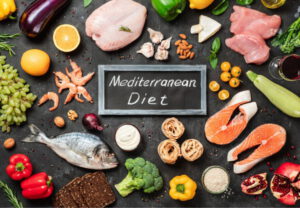![]()
Food Labels
You cannot measure every morsel that passes your lips; however, it is a great idea to gauge most foods and drinks till you obtain a feeling for portion sizes. It is a supersized globe around; many people are surprised to see that their idea of a single serving is actually 2 or 3.
If you enjoy bells and whistles, there are food ranges that are preprogrammed with nutritional information, along with ranges that will certainly maintain a running total of your day-to-day food and nutrient intake. The only tools you truly need, nevertheless, are a simple and economical gram scale, completely dry and liquid measuring cups, also suggestions on reading food labels.
Amongst all of the mentioned tools, reading food labels appear to be one of the most efficient means of determining the appropriate sort of food to be bought in the grocery store. It allows you to make sensible food options. With the “Nutrition Facts” section in a certain product in the grocery store, you can determine the quantity of serving sizes provided in the item.
With food labels, you can plainly understand the quantity and the type of nutrients that are supplied in the product. Typically, it consists of the details on saturated fat, sodium, overall fat, fiber, as well as cholesterol amount “per serving.”
Nonetheless, understanding and reading these food labels can be extremely perplexing. A common customer would certainly ask what those numbers imply and how it will certainly influence her diet intake if ever she will consistently follow the serving guide as specified on the food label.
To have a clear as well as much more extensive understanding of the things mentioned in the food label, below is a listing of points that you need to understand:
- Serving size
This is the primary thing you will certainly see on a food label. The quantity of portions mentioned in the food label describes the number of food people normally eat. Nevertheless, this does not always suggest that it reflects your own amount of food consumption.
Additionally, the serving size identifies the number of nutrients that go into the body. This suggests that if you will certainly comply with what the serving size is, you will acquire the very same amount of nutrients according to the serving size that was given up on the label.
As an example, if the serving size claims one serving size amounts to 54 grams, that would certainly imply you need to measure 54 grams and consume that and you have actually consumed one serving. In a manner of speaking, the amount of nutrients specified in the food label coincides amount that has actually entered your body considering the fact that you have actually just eaten 54 grams.
Nevertheless, if you have eaten whatever, and the food label claims that each pack is equivalent to 4 servings, you need to calculate the number of nutrients that have entered your body. This indicates that if the food label claims 250 calories per serving that implies you need to multiply it by 4 to obtain the overall number of calories you have actually taken.
- Nutrients
This describes the list of offered nutrients in a specific item. It is also where the dietary claims of the item based upon the advised daily nutritional allocation are mentioned. Typically, the nutritional amounts are based on both the 2,500-calorie diet as well as the 2,000 suggested nutritional allocations. In order to understand the numeric value of each product, you must understand that the”% daily value” that the food label shows is really based upon how a certain food corresponds to the advised daily nutritional allocation for a 2,000 calorie.
If on occasion that you have purchased a product that has a nutritional allocation different from the 2,000-calorie diet, you simply need to divide the specified amount by 2,000, and you will certainly have the ability to identify the” % daily value ” for the nutrients.
- Ingredients
This describes the list of the ingredients that were utilized to produce the item. The listing is normally organized from the main ingredients that have the greater amount by weight up to the smallest amount. This merely indicates that the real amount of the food consists of the biggest amount of the main ingredients as well as the minimum amount of the very last ingredient. Tag case This describes the type of dietary insurance claims of a specific food product
4. Label claim
This describes the type of nutritional claims of a specific food product. For example, if a product states it is sodium-free, it has much less than 5 milligrams per serving or a low-fat item actually consists of 3 grams of fat or less. Indeed, reading food labels can be really tedious and confusing. however, as soon as you master it, it would be less complicated for you to see your diet since you can currently manage the amount of food that you take.




